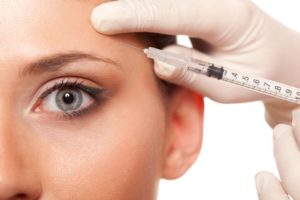 You’re probably aware that the news about vitamin D3 — the superhero of nutrients, able to bolster bones and battle everything from heart disease to cancer — just keeps getting better. But glowing reports aren’t the whole story. And like repeat rides on the Tilt-A-Whirl at the county fair, more isn’t always better. In fact, too much D may be dangerous.
You’re probably aware that the news about vitamin D3 — the superhero of nutrients, able to bolster bones and battle everything from heart disease to cancer — just keeps getting better. But glowing reports aren’t the whole story. And like repeat rides on the Tilt-A-Whirl at the county fair, more isn’t always better. In fact, too much D may be dangerous.
Haven’t heard much about overdoing D? You’re not alone. In the upbeat mania, overdoing is getting overlooked. Although D is too crucial to run low on (and many people are low), it takes some finessing to get the best results. This update’s for you . . .
- If you don’t take any vitamin D
- If you take more than 1,000 to 2,000 international units (IU) daily on your own
- If you’re considering the megadoses (as much as 100,000 IU a week) touted on the Internet
- If you’re about to plunk down cash for a vitamin D blood test that’s not from a doc (the tests can be flukey, so get ’em from a reliable, consistent source)
Time to get this right! First, we believe it’s vital for you to get enough vitamin D3 (more about D3 ahead). If you’re chronically short, your risk goes up for a passel of nastiness: several cancers (including breast, colon, and ovarian), heart disease, osteoporosis, asthma, type 1 diabetes, multiple sclerosis, and high blood pressure. New studies are also turning up links between low D and obesity in kids, injuries among pro football players, digestive diseases, pneumonia, and anemia.
On the upside, researchers have recently found that having healthy amounts of D3 relaxes your blood vessels, helps bone-building drugs work better, makes weight loss faster and easier, and even transforms slow sperm into speedy swimmers (think dog paddlers versus Michael Phelps).
That’s cool. But popping lots of D isn’t your next move. As we said, while enough is great, too much ain’t. Taking more than 10,000 IU per day, for example, might make you absorb too much D and too much calcium, causing kidney damage. (Dialysis anyone? We thought not.) And although enough D helps bones, older women who took gigantic 550,000 IU doses every fall or winter for 3 to 5 years in one study had more fractures and more falls than those who got no extra D. Same goes for blood vessels: Too much not only nixes benefits, it stiffens your arteries.
Why can excess D double cross you? Big doses seem to steal calcium from your bones and spew it into your bloodstream, interfering with muscle function and putting your arteries and kidneys in peril.
By now we bet you’re saying, “Okay, docs, what’s too little, what’s too much, what’s just right?” Coming up.
Aim for 1,000 IU of vitamin D3 per day. Total. Include what’s in your multi, your calcium-D3- magnesium tablet, your D-fortified milk or other fortified foods. Yes, we’ve seen the Internet buzz about taking super-high doses on your own. Don’t do it. The Institute of Medicine says over 4,000 IU per day can be harmful; we say don’t go over 2,000 IU without talking with your doc. Superpills packing 10,000 IU should only be taken under medical supervision, usually by those who don’t absorb it well or who need a special regimen.
Here’s how to close your personal vitamin D gap.
Take D3, not plain D. It’s the most active form of the vitamin and the type your skin makes naturally when it’s exposed to sunlight for 15 minutes or so.
Get a blood test for D if . . . you’re dark skinned; you’re elderly; you always wear sunscreen and a hat outdoors (smart moves otherwise); you’re obese (D stored in fat is less bioavailable); you have trouble digesting fats; or you live north of Atlanta, Georgia — during winter, the sun’s rays above there simply aren’t strong enough for you to create enough D.
What’s low? We consider D low when it’s below 50 ng/mL. While there’s little consensus on what’s definitively healthy or too high, there’s evidence that D’s dark side starts appearing above 80 ng/mL. Levels over 500 are toxic. Remember that D blood tests (about $35 to $40 from your doc) can give inconsistent results; recheck ultra-low or -high results.





